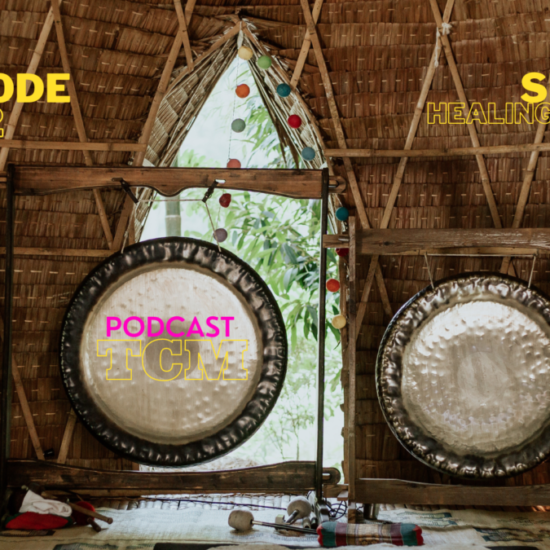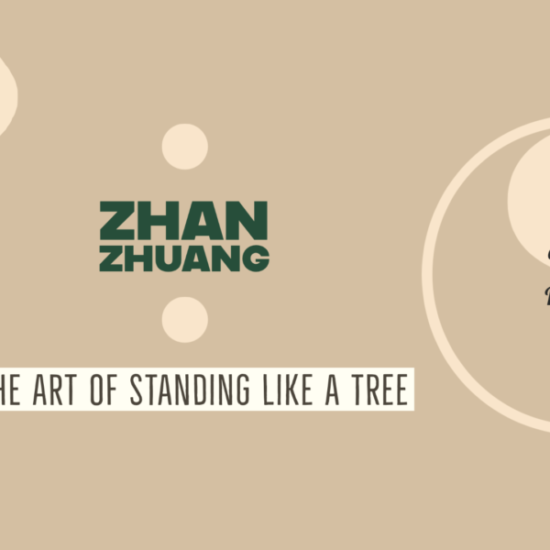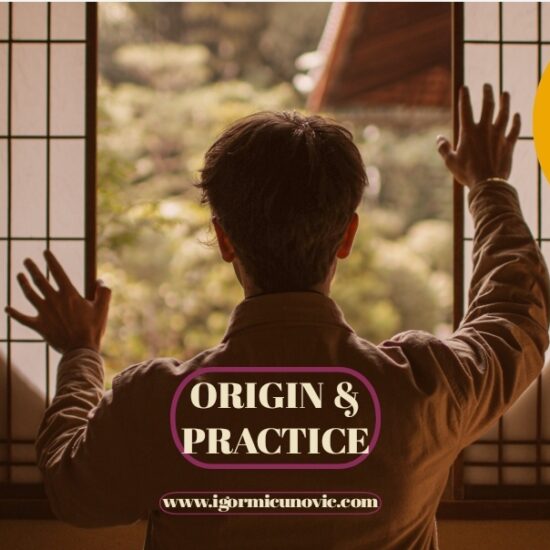Mushrooms have been valued throughout the world as both food and medicine for thousands of years. While most fleshy mushrooms emerge from mycelium and reproduce in a few days, the mycelium from which they arise can live for decades to hundreds of years. Mycelium is a foundation of nature’s land based food webs.
Mushrooms are nature’s recyclers, breaking down what has died so it can be used to create new life. Since they contain no chlorophyll like green plants, they can’t perform photosynthesis. Consequently, they must get all their nutrients from the soil. Although most mushrooms are edible, few species are actually consumed. Medicinal mushrooms are widely used in East Asia as highly valuable tonics for life, energy, longevity, and for various spiritual ceremonies. They are used for the treatment of various diseases, especially in complementary cancer care.
Study results suggested beneficial effects of medicinal mushrooms, particularly quality of life and reduction of adverse effects of conventional therapies. Also, positive effects on antitumor activity and immunomodulation were reported. Mushrooms have been identified to possess many medicinal functions, including antimicrobial, anti-inflammatory, immunomodulating, antitumoral, hepatoprotective, antidiabetic, and prebiotic properties.
Not all mushrooms are inherently beneficial for humans, but the right species appear to have some incredible medicinal benefits. Mushrooms may also be the perfect food for staying trim and healthy. Actually, mushrooms are just one of the many kinds of fungi which consists of 100,000 different species of fungi and divided these into two major divisions, Mastigomycota and Amastigomycota. The Amastigomycota, is a large and diverse group of edible and medicinal fungi.
Medical mushrooms in Asia
Fungi have played an important role in Chinese culture for perhaps 7,000 years. Over the millennia, common mushrooms such as the wood ear and jelly fungus have been important food items. Various simple fungi were also utilized to make fermented food products such as wine, vinegar, soy sauce, and pickled vegetables. Fungi were utilized for their healing properties in China and popularized over centuries in South-East Asia as well.
The use of fungi such as hoelen, caterpillar fungus, and ergot in traditional Chinese medicine (TCM) was also recorded in the TCM literature. The oldest official Chinese list of medicinal substances comes from the Classic of the Materia Medica (Shennong Bencaojing 神農本草經) written between about 206 BC and 220 AD, and the Mingyi bielu (Chin.名醫別錄). It contains 365 medicinal substances, and the list includes several mushroom species used for medicinal purposes.
Earlier mention of the use of fungi in medicine outside of the main classics occurred as early as 26 B.C. in the “Book of Songs,”(Chin. Shijing 诗经) a compilation of folk-songs and poems. Shitake was included in a work on herbal medicine first in 1209 in the Records of Longquan County.
Probably the most famous of all works on Chinese materia medica is the monumental Compendium of Materia Medica (Bencao gangmu本草綱目), which was compiled by Li Shizhen (Chin. 李时珍) and published in 1578 in Nanjing three years after he died. This enormous endeavour took Li Shizhen 27 years and includes 1,892 species of animal, herbal, and mineral drugs, including 1,100 illustrations and 11,000 prescriptions.
A number of medicinal mushrooms, such as ling zhi, bai mu er, cordyceps, shitake and hoelen , along with ginseng and astragalus, are considered to belong to the highest class of medicines-tonics, which are said to impart strength, vigor, and longevity. They fall into the category of remedies called “fu zheng 扶正”, or “supporting the normal functions”.
Medicinal mushrooms – power from nature
Among the medicinal mushrooms, Shiitake Lentinus edodes is now the world’s leading cultivated edible mushroom, at about 25 percent of the world’s supply, with China as the major producer.
Mushrooms in general are loaded with beneficial nutrients like B vitamins, antioxidants, and fiber, and are composed mostly of water, carbohydrates, and proteins. Medicinal mushrooms have exceptional properties known to be beneficial to the body’s metabolism and immune system. Mushrooms can also help scavenge free radicals during detoxification of the body.
Research has paid special attention to mushroom polysaccharides, which are a type of carbohydrate that contributes to the metabolism of sugars such as glucose. The most important of these is a beta-glucan, a phytochemical polysaccharide found in the cell walls of medicinal mushrooms.
Studies have shown that beta-glucan helps fight inflammation and aids the immune system by activating killer T-cells. These coordinate multiple aspects of adaptive immunity, including responses to intracellular pathogens, allergens, and tumors.
Eating properties
Some medicinal mushrooms, such as shiitake, enokitake, lions mane, and maitake, can be eaten by simply cooking them. Others, such as reishi or turkey tail, are too tough and bitter to eat and need to be made into tea, soup, powders, or tinctures that can be added to smoothies, teas, coffee, or sprinkled on cereal.
Shitake S (Lentinula edodes) – fragrant mushrooms (Chin. 香菇)
The earliest written record of shiitake cultivation is seen in the Records of Longquan County (Chin. 龍泉縣志) compiled by He Zhan (Chin. 何澹) in 1209 during the Song Dinasty in China. Shiitake cultivation became popular since 1982 when Japanese variety took opportunities for commercial cultivation in the United States.
Shiitake mushrooms are native to eastern Asian countries and are now cultivated (and consumed) globally. Shiitake mushrooms are thought to have a legion of medicinal properties, thanks in part to its diverse profile of micronutrients, such as phosphorus, B vitamins, selenium and a compelling profile of health promoting polysaccharides, and can help support adrenal function.
One particularly potent polysaccharide present in shiitake mushrooms is lentinan (a beta-glucan). Lentinan has been shown to have anti-tumor and immune regulating properties. In fact, one study demonstrated that lentinan suppresses the expression of liver enzymes CYP1A which in turn decreases the risk of forming carcinogenic compounds.
Shiitake mushrooms are antiviral and antibacterial helping to prevent colds and flu and even supporting the treatment of HIV patients.
Shiitake mushrooms also contain vitamin D, which is important for bone health, and heart health, reducing the risk of diabetes, cancer, and auto-immune diseases.
Shiitake mushrooms have one of the highest amounts of natural copper, a mineral that supports healthy blood vessels, bones, and immune support. In fact, 1/2 cup of shiitake mushrooms gives you 72 percent of your daily recommended intake (DRI) of this mineral. The mushrooms are also a rich source of selenium, providing 33 percent of your DRI.
Shiitake mushrooms contain eritadenine, a compound known to reduce cholesterol levels in the blood. They also contain beta-glucans that reduce inflammation and help prevent the intestines from absorbing cholesterol.
Shitake recipes
Most Chinese and Japanese cookbooks today have at least one recipe for the fragrant mushrooms – Shiitake, and the health benefits make them all the more enticing at the table. Fragrant Mushroom are usually used for Bo Tong (Chin. 煲汤), meaning “long boiling soups” where the purpose is to add flavours to the dish and there is less scrutiny on the texture of the mushroom.
Try some of these recipes and find out for yourself.
Sweet black forest mushroom
10 large dried shiitake, reconstituted in 2 cups warm water;
cover for 1 5 minutes;
½ tablespoon sugar;
¼ teaspoon salt;
2 teaspoons light soy sauce;
1 tablespoon mirin (sweet rice cooking wine).
After soaking shiitake, trim off the heavy stems. Cut the caps if desired into pie-shaped wedges. Pour off the top of the mushroom-soaking liquid into a saucepan. discarding the sediment remaining at the bot· tom. Boil shiitake with the sugar in the liquid for 5 minutes. Add salt and soy sauce. Simmer another 5 minutes. Add mirin a minute before removing from stove. Allow shiitake to soak for 10-15 more minutes to accumulate as much additional flavor and juice as possible. Remove to a dish and serve at room temperature. This is particularly good as a side dish for dinner or as an addition to a Japanese picnic lunch. Serves two or more, as long as the guests don’t get greedy.
Shitake sweet and sour salad
½ cup fresh shiitake;
1 garlic clove, minced;
½ cup onion rings;
¼ cup herb salad dressing;
2 cups fresh green vegetables.
Mix the shiitake, garlic, onion rings, and dressing, and saute until the onion rings are tender. Add the whole mixture to salad greens. Toss and serve. Provides two servings.
Shitake and prawns
16 dried shiitake caps;
3 garlic cloves;
3 tablespoons butter, melted;
1 handful of pea pods;
2 packages of Chinese instant noodles (without seasoning) 1 pound shelled prawns or jumbo shrimp;
3 tablespoons teriyaki sauce.
Soak the mushroom caps in warm water for 15 minutes. Squeeze out the water by hand, saving the shiitake-water for later. Cut the caps into strips and remove the tough centers. Crush the garlic and add it to the melted butter.
Set a frying pan or wok over medium high heat. Steam the pea pods or saute them in garlic butter, and prepare the noodles as instructed on the package. Separately saute the prawns in garlic butter until cooked (when they turn a lighter color) Add the pea pods, the soaked shiitake strips, and the teriyaki sauce as desired. Add a splash or two of the shiitake-water and cover for 30 seconds to finish. To serve, place the noodles on a plate and top them with shiitake and prawns. Serves two very hungry people or three as a side dish.
Uses of shitake in traditional Chinese medicine
Emperors of China ate the mushroom in great quantities to slow the onset of old age. Today, shiitake is among the foods and herbal medicines in the Chinese diet that nutritionists have determined are rich in “anti-aging activities.” For that reason, shiitake was recently listed by the Chinese Academy of Medical Sciences as a promising candidate for research devoted to caring for the rapidly growing segment of China’s population aged sixty and over. By 2025 the number in that age group will have reached an estimated 208,000,000 people. In China during the Ming dynasty (A.D. 1368-1644), shiitake was already recognized as a medicinal food.
In traditional Chinese medicine, shiitake is categorized as a food that has an “upward” effect upon the “yang” energy of the body and corresponds to a “sweet” flavour with a “neutral” energy. The organ given as corresponding to shiitake is the stomach. Foods classified as sweet are said to act on the spleen and stomach and are used to slow acute symptoms and to neutralize the toxic actions of foods. Sweet foods are recommended in cases in which the digestive system is weak. The upward movement category for shiitake means that it would generally be used to treat ailments of the lower body, such as a prolapsed uterus, gastroptosis (falling stomach), or diarrhea.
In traditional Chinese medicine, shiitake is a food that activates the blood. It is indicated in treatments of colds, measles in children, bronchial inflammation, stomachache, headache, faintness, dropsy, smallpox, and mushroom poisoning.
Shiitake are beneficial to treatments of ulcers, gout, low blood pressure, constipation, myopia, poor vision, allergies, haemorrhoids, pyorrhoea, neuralgia, poor complexion, and sexual weakness.
Uses of the mycelial extract of shiitake are very similar to those of the fruit-body. For example, there are preparations of the mycelium for the bath to enhance the beauty of the skin and one for dermatological diseases that clinical tests found efficacious in the treatment of skin rash and acne.
It is recorded that in ancient times members of the Japanese courts regarded shiitake as an aphrodisiac and defended the growing sites by keeping them hidden and well-guarded.
Preparation
For use of the mushroom fruit-bodies in maintaining health, the amount of shiitake recommended to eat daily is 3 to 4 grams. Twice this amount is used to remedy ailments, and in that application the tea and extract are preferred. Not only are extracts more convenient than having to cook the mushroom, but some are also concentrated to provide ten times the amount of mushroom you get in a simple powde red mushroom product. Shiitake intake for different problems:
General health maintenance – 3 to 4 grams of mushroom a day.
Mushroom poisoning – 9 grams dried shiitake cooked in water; broth taken in one day.
Measles in children – 6 grams of dried shiitake simmered in water; broth taken twice daily.
Stomachache – 9 grams dried shiitake simmered in water; taken daily.
Headaches and faintness – cooked shiitake eaten daily; amount according to need.
High cholesterol or atherosclerosis – 9 grams dried or 90 grams fresh shiitake daily; powdered in capsules or cooked.
High blood pressure – 8 mushrooms a day.
Liver ailments or diabetes – 8 mushrooms a day.
Flus and colds – 6 to 8 grams shiitake made into a tea or extract.


